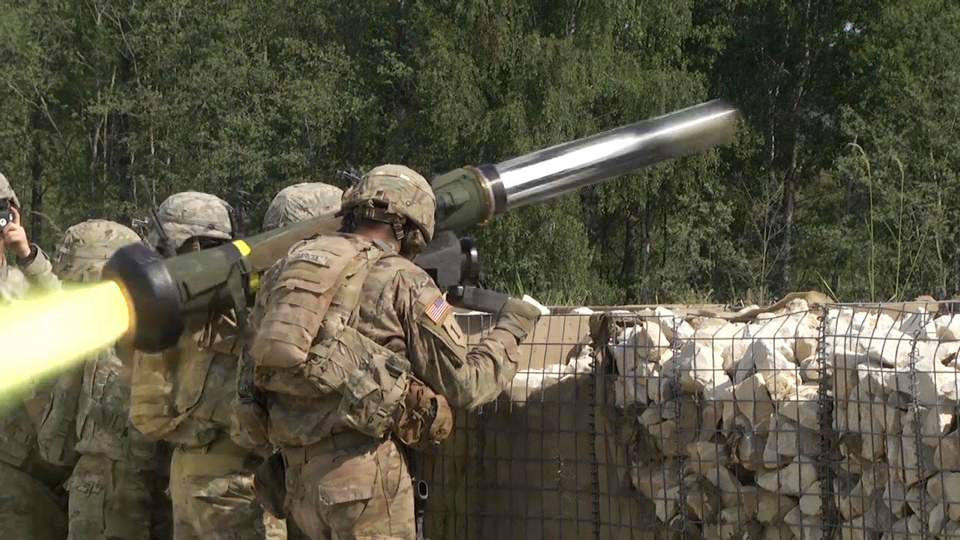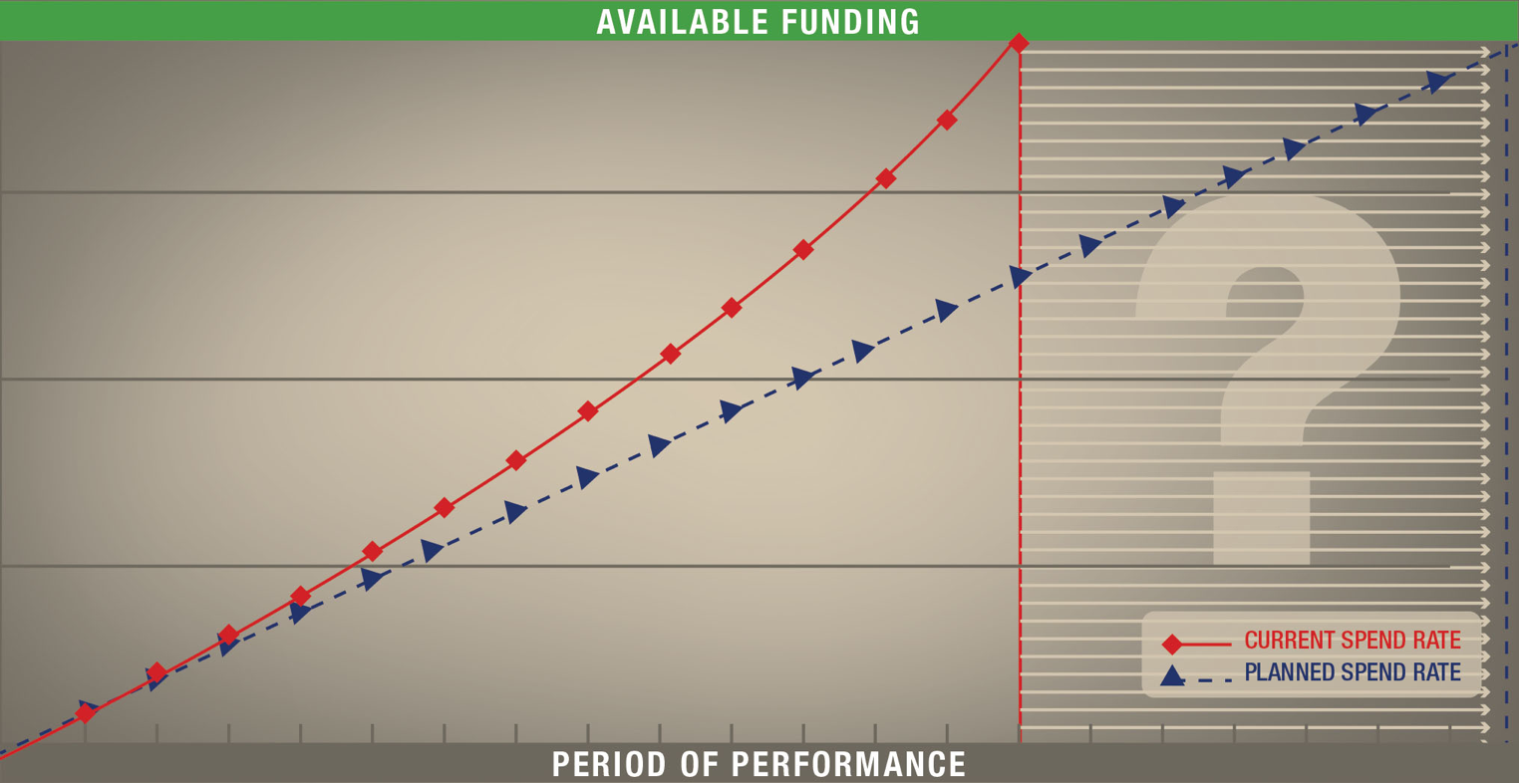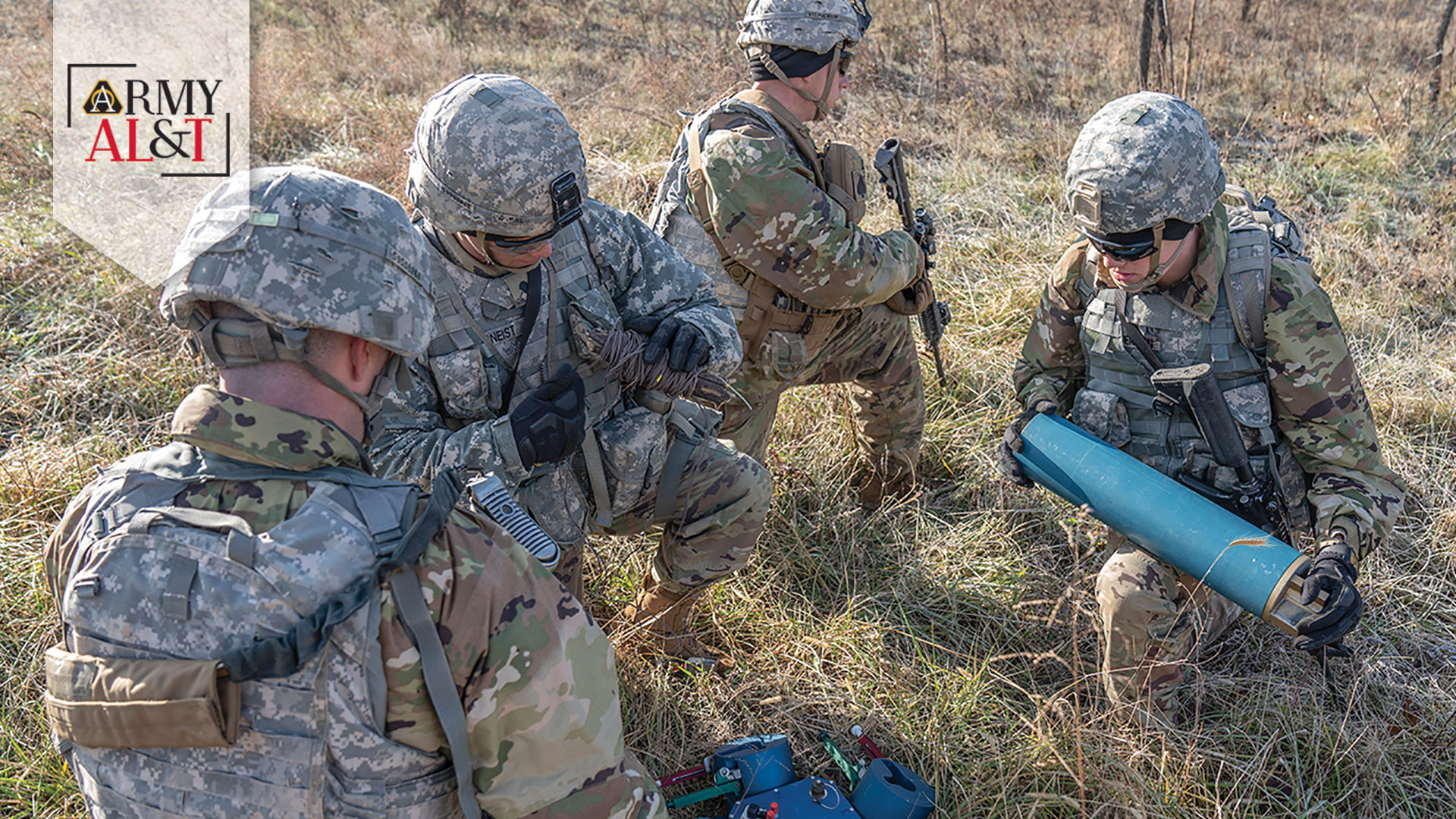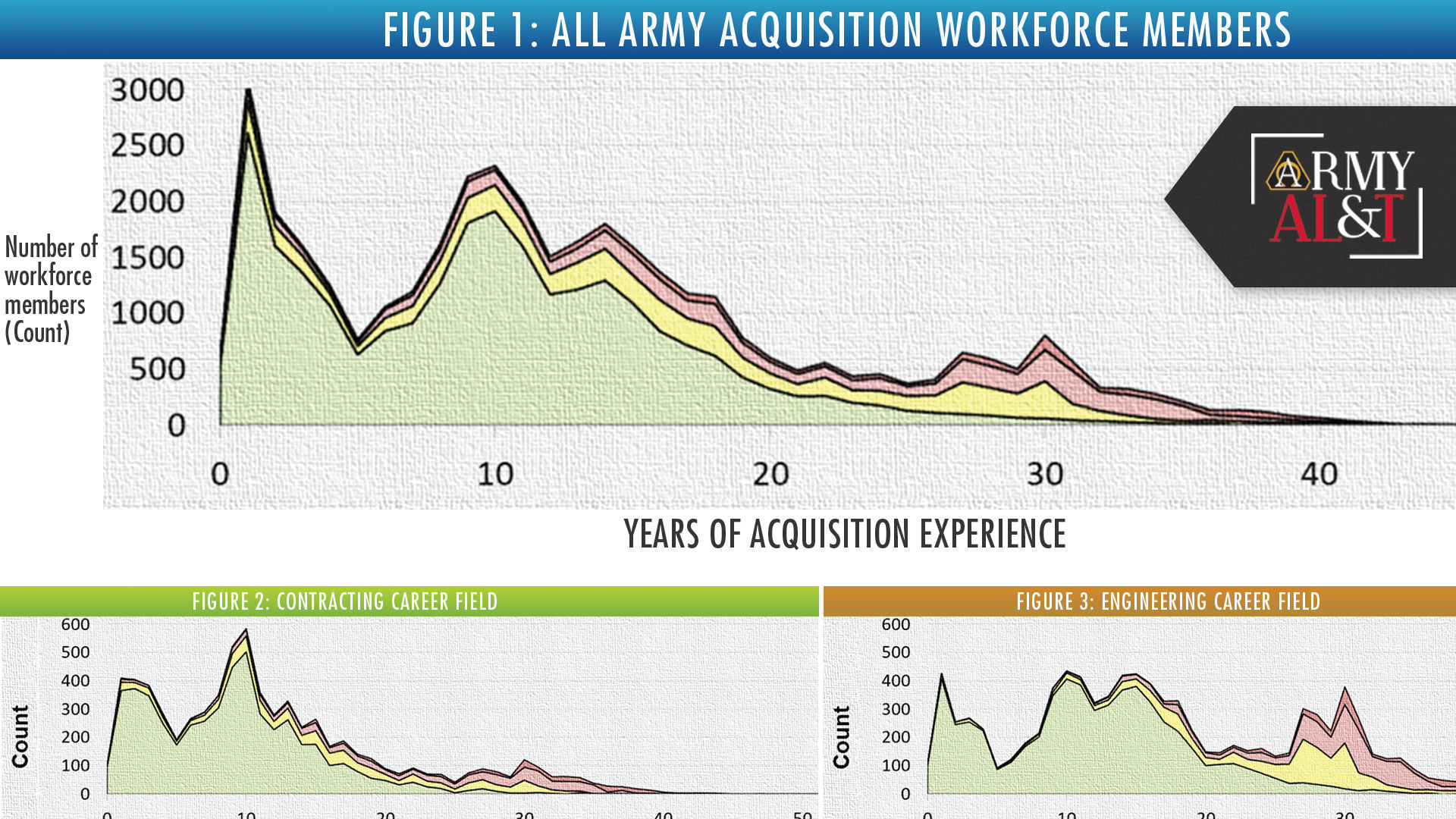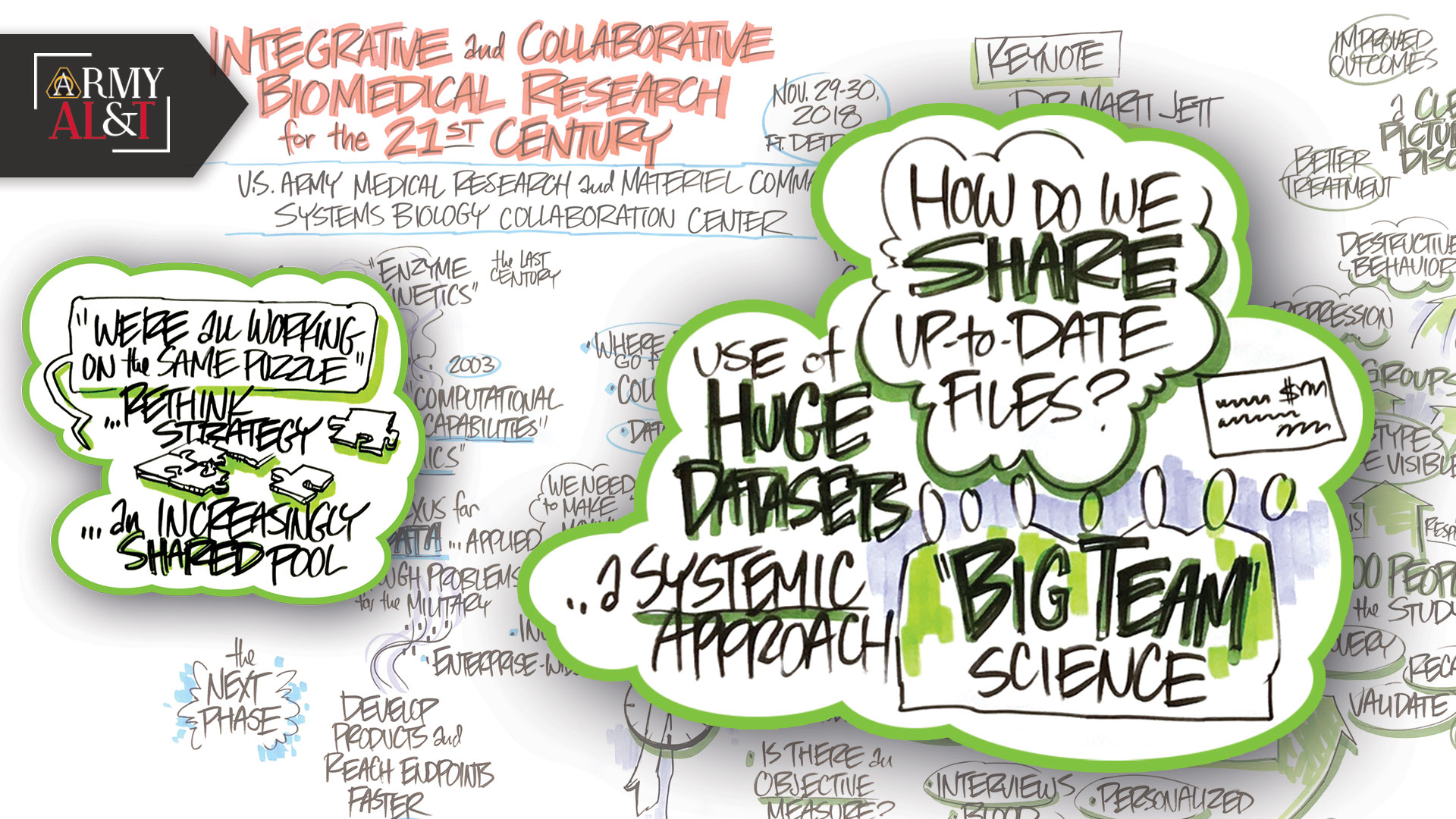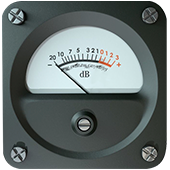
Making sure your ‘burn rate’ doesn’t overheat can be the difference between a successful program and toast.
I still remember how it went that day in November. It was way back in the 1990s, and at the time I was a major serving as the assistant project manager for the development of the Javelin anti-tank missile system. We were right in the middle of our 36-month engineering, manufacturing and development (EMD) effort.
The boss assembled a few of us in the conference room. He said, “We have to call for a DAB [Defense Acquisition Board]—this program is going to need a formal re-baselining. I woke up at 3 o’clock this morning and did a quick calculation: At the rate we’re spending, we’re going to run out of money before the next fiscal year starts! And what’s worse is, I think we’re going to blow through our budget at completion.”
I had just joined the program a month earlier and was pretty excited about getting the needed capability into the hands of my infantry branch “brothers.” They wanted and needed a true “fire and forget” anti-armor weapon to replace the less effective Dragon, introduced in the mid-1970s. I thought, “How could we be in so much trouble? And how could the boss know at this juncture that we were going to fail to stay within budget for the remainder of the program?”
The DAB, marking formal notification of a major problem in need of senior leadership guidance, was a big enough crisis. It was going to get a lot uglier as we all began to realize this would also constitute a Nunn-McCurdy breach and need congressional approval to continue by moving the funds around to fix it. I got with our program analyst and started looking at the earned value management (EVM) figures and the prior monthly contractor performance reports. I knew EVM, as a program management tool, was a long-standing specification that we added to cost-reimbursable contracts and was rapidly becoming an industrywide standard for estimation of the true value of work performed to date, as opposed to simply a metric to show the difference between what was budgeted and what had been spent.
If the “bean counters” were correct, our performance and schedule indices showed a pretty large jump in what would be the final tally for this program; just how large was to be determined. But to me it looked like they just used a ruler to extrapolate our current inefficiencies and overruns out to the end of EMD. Was there no chance for improvement? Could we not “get well?” We wanted to be optimistic, but we were falling behind schedule as we failed to meet our own specs.
I helped prepare the information briefings as we went up the command chain to tell the bad news about the Javelin program. Once inside “the building”—the Pentagon— I found out we weren’t alone: Lots of programs were busting cost and schedule thresholds and needed more money and time. It wasn’t a good time to have our hands out, with a big drawdown underway—but it never is. The contract for EMD was bid and awarded at $170 million, but the government felt the program was still fairly high risk, so close to an additional $100 million was budgeted for it. Now, just 18 months into the program, we already could forecast that even that much money wouldn’t be enough.
Members of the 2nd Infantry Brigade Combat Team, 4th Infantry Division fire an FGM-148 Javelin anti-tank missile during a training exercise at Grafenwoehr Training Area, Germany, in May. In the 1990s, 18 months into developing the Javelin, the author recalls a meeting where he learned the program was rapidly running out of money. (Photo by Pvt. Nicholas Vidro, 7th Mobile Public Affairs Detachment.)
BURN RATE 101
For professional military officers, it certainly isn’t easy to admit failure, or to predict that you’re going to be a failure in 18 months or less. It took us the better part of a year and about four more meetings of the non-milestone DAB to formally re-baseline the program—recalculate and revise the costs and schedule for the remaining work—by deferring our production and recoloring the near-term money, etc. It was painful.
One of the main difficulties was not only projecting how much more money we would need to finish development, but how much more time as well. Red teams, blue teams, tiger teams—the bureaucracy assigned any number of “experts” to help us figure it all out. The Cost Assessment and Program Evaluation office, back then called the Cost Analysis Improvement Group, was heavily involved in getting to the root causes of our troubles and identifying the resources needed to proceed. We had been spending about $10 million per month, and we were going to need about $180 million more. What no one seemed to be able to decide was how much more schedule should be added to the original 36-month effort.
There were 40-month estimates, and 42- and 48- and finally 54-month versions of the revised EMD phase. We finally arrived at the 54-month estimate—18 additional months for the additional $180 million. How about that! We could’ve done some pretty simple math to arrive at that schedule figure once we got the latest revised bottom-up engineering estimate. But believe it or not, there weren’t that many people who even considered the burn rate in their estimates of the schedule needed.
An important takeaway for me from all this was the idea of spending rate, or “burn rate.” Earned value management “gold cards,” provided by Defense Acquisition University, and their published instructions tell you all about various ways to figure out a new estimate at completion (EAC). But the EVM readings and formulas available to all of us don’t adequately teach us how to estimate schedule when they take us through these concepts of planned, actual and earned value. The squiggly lines and values typically guide us toward estimation of a new budget at completion (BAC), or EAC, but they don’t elaborate on how much more time might be needed. And time is indeed money.
It’s possible, perhaps, to apply cost performance index and schedule performance index calculations against the original budget to project a new version of the program schedule. But current EVM instruction is really lacking when it comes to how to deal with the extra funds you receive if you’re unlucky enough to need them and lucky enough to get them.
It turns out, as I discovered during the Javelin recalculations, that once development programs get underway, their staffs of various engineers burn resources at a fairly consistent rate. For us, we were involved with “knowledge work” at that point; no missiles had yet flown. But lots of chemical, mechanical, electrical and software engineering was in flow, as well as all the work of the business types: admin, scheduling, management and indirect costs, for example.
LESSON WELL LEARNED
Frequently, we work EVM problems here at the Naval Postgraduate School. I ask my students how much more money and time will be required for a program running behind schedule and over budget. Unlike common stock shares’ technical analysis charts, EVM is indeed a predictive tool. And as with an artillery shell just one millimeter off its deflection or azimuth, a cost or schedule variance vectors out over distance to become quite large depending on range (or time to go).
Most often, students come up with a nice combined index formula for a pessimistic estimate—maybe the more pessimistic, the better—but then they expect to spend many more millions of dollars in only a few months added to EMD. It just isn’t likely to happen, because practically, industry cannot simply add staff to “crash” the program and finish it rapidly. They’ll most likely continue at their current systemic rate of cost and schedule inefficiency. Hopefully, the earned value you attain during the extension will be the same or better than what it’s been so far—but we can’t expect miracles.
This knowledge would serve me well a few years later when I took over my own program. It was amazingly similar to the Javelin program in programmatic terms. At my change of charter ceremony, a nice lady came through the receiving line to introduce herself and shake my hand. “Hi, I’m Barb,” she said cheerily. “I’m your program analyst. It’s April,” she continued, stating the obvious, “and, if my projections are correct, you’re going to be out of money by July.” I stood dumbly, taking in what she said, before she added, “There’s cake in the conference room. Enjoy!” I was a bit taken aback—but I knew exactly what to do.
A quick phone call to my industry counterpart, and we were soon developing a spend plan for the rest of the year—a contractor’s “diet” that he and his crew would have to adhere to strictly in order to get to Oct. 1 and a new supply of money. We published that spending plan to all program stakeholders to increase the pressure and have everyone stick to it.
I also asked for a “manpower off-ramp” chart. Since we were nearing the end of development, I wanted to see design engineers rolling off my program and on to other work at their companies. Sure, there would be production and quality types coming aboard, but I wanted to see billings for design work taper off as the design was completed. We did a little scrub of scope that the government had requested two years earlier—a variety of unnecessary contract data requirements lists, mostly—and got back about six weeks of an eight-week slip situation, arriving on budget for that year. Whew!
When available funding is projected to run out before the performance period ends, programs need to adjust their burn rates. (Graphic by U.S. Army Acquisition Support Center)
CONCLUSION
The moral of this little story is to know your burn rate in addition to all the other numbers floating around. As the PM, you have a lot on your mind financially: How much have I spent this fiscal year, internally to the program management office, externally to support contractors and government labs, test ranges, etc., and how much to the system prime contractor? How much is in the colors of money that I have in the Future Years Defense Program and program objective memorandum (POM)? What is my spend (burn) rate? How much of the fiscal year is left? When is the budget going in for next year and for how much? Does it reflect what I need, and does the POM fully reflect where we are event-wise in the program?
There’s so much to be fully situationally aware of on the business side. If only that were all you had to worry about. … But maybe you can ask the question about “our current burn rate” next time the discussion rolls around to funds needed. You just might be the smartest person in the room!
by John T. Dillard, Col., USA (Ret.)
JOHN T. DILLARD, COL., USA (RET.) managed major weapons development efforts for most of his 26-year career in the U.S. Army. He is now a senior lecturer in systems acquisition management at the Graduate School of Business and Public Policy, U.S. Naval Postgraduate School in Monterey, California. He has also served on the faculty of the U.S. Army War College and as an adjunct professor of project management for the University of California at Santa Cruz. He holds an M.S. in systems management from the University of Southern California and is a distinguished military graduate of the University of Tennessee at Chattanooga with a B.A. in biological sciences.

